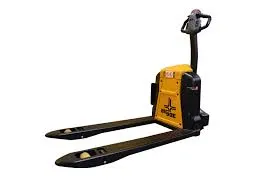


The Pivotal Role of Pulley Blocks in Modern Mechanics
The pulley block is an ingenious invention that has played a crucial role in the development of mechanical systems throughout history. As a system that utilizes the principle of a simple machine, the pulley block serves to lift, lower, and hoist heavy loads with ease. Its applications span various industries, from construction to shipping, making it an essential tool in both everyday and industrial contexts.
Understanding the Pulley Block System
At its core, a pulley block consists of a wheel on an axle or shaft, providing a grooved surface for a rope or cable to run along. When a force is applied to one end of the rope, the wheel rotates, transferring the force to lift an object at the other end. The fundamental advantage of using a pulley block lies in its ability to change the direction of force applied; instead of lifting an object directly upwards, one can pull down on the rope to achieve the same result.
Pulley blocks can come in various configurations, including single, double, or even multiple pulley blocks, each designed for specific applications. A single pulley alters the direction of the force, while a double pulley can increase mechanical advantage, allowing a person to lift heavier loads with comparatively less effort. In specialized settings, such as in block and tackle systems, multiple pulley blocks can greatly reduce the effort needed for lifting, showcasing the remarkable efficiency of this simple machine.
Applications of Pulley Blocks
The versatility of pulley blocks makes them indispensable in a wide array of fields. In the construction industry, for example, they are vital for moving heavy materials, such as steel beams or concrete blocks, to elevated positions. Cranes often incorporate complex systems of pulleys to enhance their lifting capabilities, demonstrating how the foundational mechanics of the pulley block can be scaled for larger operations.

In maritime environments, pulley blocks facilitate the operation of sails, masts, and cargo hoists on ships. Mariners rely on these systems to adjust sails efficiently or to hoist and lower goods aboard transport vessels, highlighting the longstanding relationship between pulleys and maritime trade. Even in the realms of theatre and entertainment, pulley systems are employed to create awe-inspiring stage effects, allowing for seamless transitions of scenery or the elevation of performers.
Beyond industrial applications, pulley blocks find their way into recreational activities, such as rock climbing and zip-lining. They not only enhance safety by redistributing weight but also make it easier for climbers to ascend steep cliffs or zip-line riders to enjoy an exhilarating descent.
Advantages of Using Pulley Blocks
One of the primary benefits of utilizing pulley blocks is their ability to reduce the amount of force needed to lift heavy objects. By redistributing weight and allowing for the use of gravitational forces, pulley systems can make previously daunting tasks attainable. This becomes particularly important in labor-intensive environments, where efficiency is paramount.
Furthermore, the simplicity and relative low cost of pulley systems make them accessible for both DIY enthusiasts and large-scale industrial operations. They require minimal maintenance and are durable when used correctly, making them a reliable choice for lifting jobs.
Conclusion
In summary, pulley blocks stand as a testament to human ingenuity, embodying the principles of physics in their operation while offering extensive practical applications. From construction sites to theaters, and even in our personal pursuits, they have become embedded in the fabric of our mechanical world. As technology continues to advance, the fundamental principles behind pulley blocks will undoubtedly remain relevant, evolving in tandem with modern engineering to meet future challenges. The ongoing legacy of pulley blocks showcases the beauty of simple machines and their capacity to empower human endeavor in lifting and moving our world forward.



